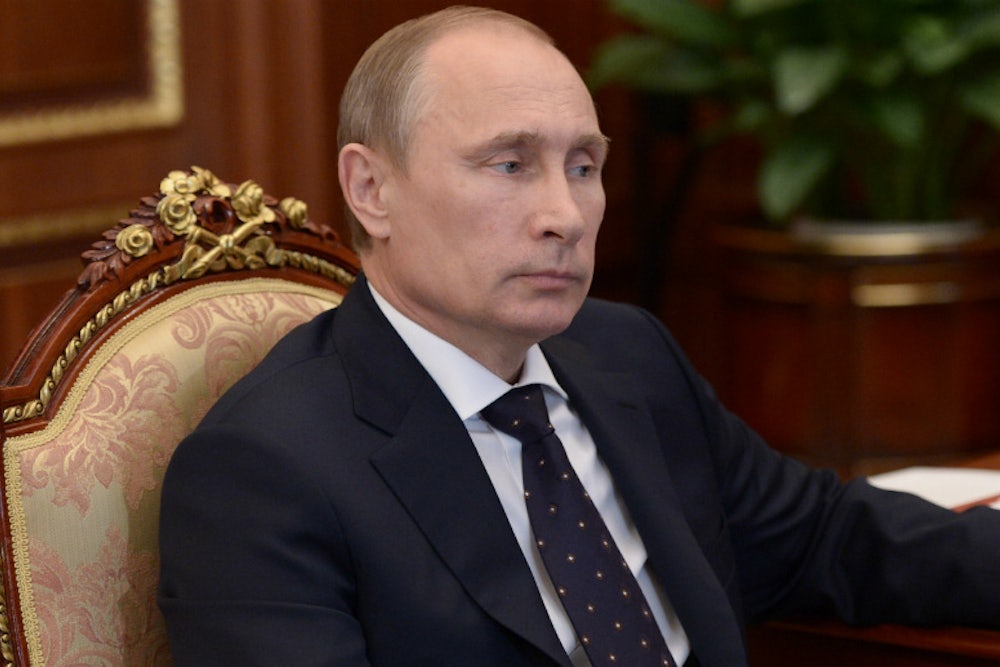Who can forget November 9, 1989? On this date, jubilant German citizens from West and East stood atop the once imposing Berlin Wall, a symbol of Europe’s four decades of division. The simple notion that Europe should be whole and free, put forward by U.S. President George H.W. Bush earlier that spring in Mainz, no longer seemed a distant dream. After all, Soviet leader Mikhail Gorbachev appeared committed to allowing Eastern Europeans the freedom to choose their own futures—and why wouldn’t they choose democracy and market economies? Twenty-five years later, Americans and Europeans should be quite pleased with the many successes of their joint endeavor to build a Europe whole, free, and at peace.
But after a period of expansion, it now seems that the West has reached the limit of its post-1989 Europe policy. Paradoxically, it must return to principles formulated in 1949—to concentrate on consolidating its gains while containing the threat that Russia poses.
After the fall of the Berlin Wall, George H.W. Bush, working with then–West German chancellor Helmut Kohl and other European leaders, ensured the peaceful unification of Germany. Bill Clinton subsequently ended the war in Bosnia; enabled the inclusion of Poland, Hungary, and the Czech Republic in NATO; and ultimately led the Alliance to defend the population of Kosovo. George W. Bush promoted NATO’s expansion to include even more of Europe, while his Western European counterparts pursued the enlargement of the European Union. Two more countries, Albania and Croatia, joined NATO early in Barack Obama’s presidency. The successes of these new member states is due in part to the prospect of NATO and EU membership; the greater credit is due to the determination of populations and governments in Central and Eastern Europe to carry out political and economic reforms in order to join Europe’s zone of peace and prosperity.
In the early 1990s, the West hoped Russia would pursue this path as well. Boris Yeltsin came to power competing with Gorbachev by promising to be even more pro-Western, pro-democracy, and pro-markets than the Soviet leader. In an effort to strengthen his position as president of Russia, Yeltsin promoted the independence of the other Soviet republics in order to bring Gorbachev’s political career to a close. Yeltsin would soon complain about NATO enlargement and later the Kosovo war, but he always looked for ways to appear as part of the Western club, reveling, for example, in joining the Group of Eight (G-8). In the 1990s, with the United States ascendant and Russia trying to find its way, it seemed that a Europe that was whole, free, and at peace might truly be possible.
Twenty-five years after the fall of the Berlin Wall, it is clear that this policy has run its course. While most of Europe is free to pursue peace and prosperity, secure within the NATO alliance, Russia’s revived imperialism under Vladimir Putin has drawn a new line in Europe. The Russian president has illustrated, in 2008 in Georgia and in 2014 in Ukraine, that he will not permit former Soviet republics to join the EU and NATO. Moreover, he has begun to undermine those former republics—Estonia and Latvia—previously thought to be securely within the new Europe.
A revived strategy of containment is necessary to counter Russian aggression. Without stating this as his policy, President Obama has pursued this course since March, in the aftermath of the Russian annexation of Crimea. He has worked assiduously with his European counterparts to impose biting sanctions on the Russian elite as well as on key sectors of the Russian economy. At the same time, he has worked to reassure NATO allies in the East that the North Atlantic Treaty’s Article V commitment (which states that an attack on any member of the Alliance will be considered an attack on all members) remains robust. Obama’s attitude toward Putin is consistent with the approach U.S. diplomat George Kennan fostered in the late 1940s: keep Russia from undermining Western interests in Europe while waiting for internal pressures to eventually effect a shift in Moscow’s policy over the long term. The West cannot allow Putin’s aggression to destabilize the order it has constructed in most of Europe through the EU and NATO. Moreover, a vastly improved relationship with Russia must await new leadership in the Kremlin (and Putin may well remain as president through at least 2024 if elected to another term in 2018).
Formalizing a renewed doctrine of containment today would require that President Obama adjust his current policy to further bolster NATO and help Ukraine. Rather than simply settle for the idea of a small rapid response force that could be deployed on NATO’s eastern territory, the United States should push for the permanent stationing of troops in NATO frontline states to underscore the seriousness of purpose of the Alliance. And the United States should assist the Ukrainian government by providing lethal military aid—impeding Putin’s successful efforts to date to disrupt the ability of the government in Kiev to establish order across the country. Consonant with the 1949 approach, the West must prevent Putin from appropriating more territory while acknowledging that Russia’s opposition to NATO and EU enlargement impedes the full implementation of the 1989 policy of a Europe whole and free.
Ultimately, Obama will need to publicly acknowledge that, given the current regime in Moscow, the United States and its European partners must contain the threat posed by Russia to the post–Cold War European order. Just as it did during the four decades of the Cold War, the West must remain hopeful that countries like Ukraine and Georgia will ultimately control their entire territories and be free to pursue their own futures, while maintaining pressure on Russia with hopes of moderating the Kremlin’s policy down the road. The post-1989 dream that Europe would be whole, free, and at peace yet again rests on another successful application of the West’s containment policy of 1949.
